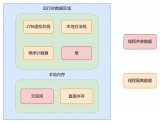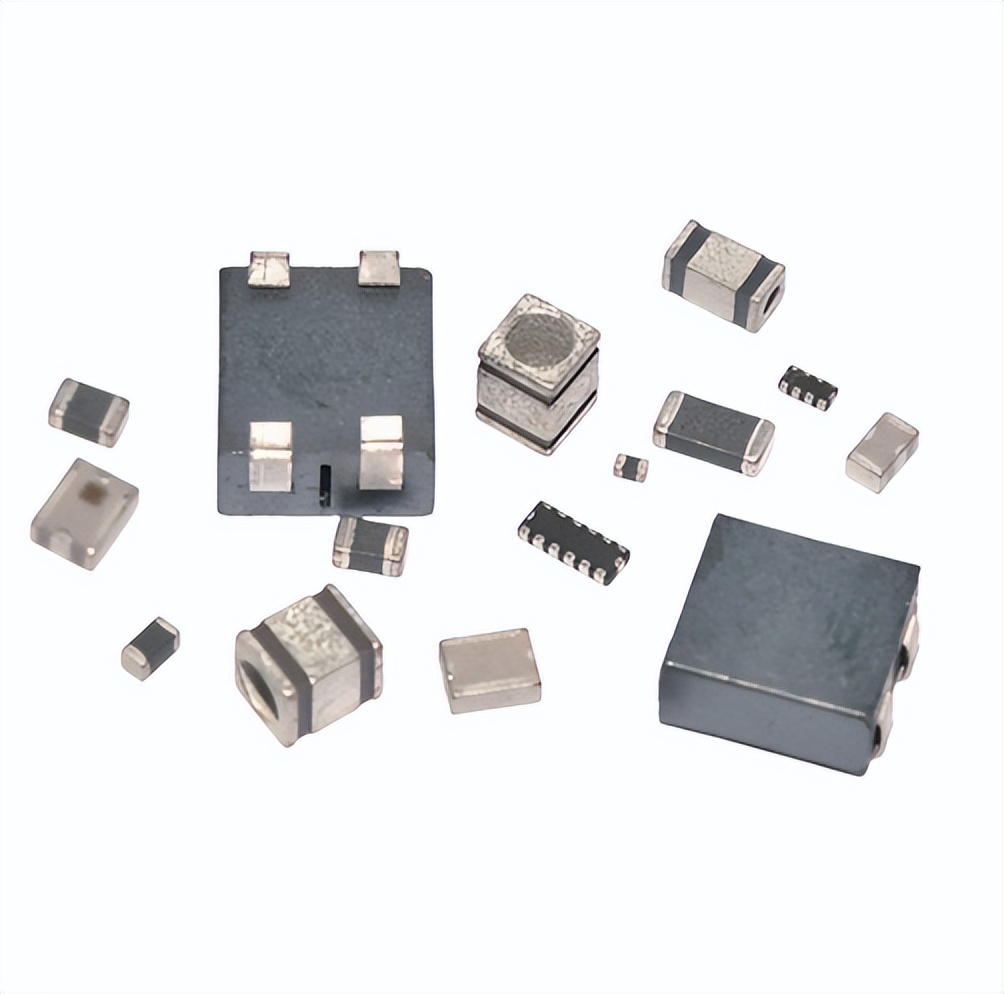概述
kprobe机制用于在内核中动态添加一些探测点,可以满足一些调试需求。本文主要探寻kprobe的执行路径,也就是说如何trap到kprobe,以及如何回到原路径继续执行。
实例
先通过一个实例来感受下kprobe,linux中有一个现成的实例: samples/kprobes/kprobe_example.c 由于当前验证环境是基于qemu+arm64,我删除了其他架构的代码,并稍稍做了一下改动:
/* * NOTE: This example is works on x86 and powerpc. * Here‘s a sample kernel module showing the use of kprobes to dump a * stack trace and selected registers when _do_fork() is called. * * For more information on theory of operation of kprobes, see * Documentation/kprobes.txt * * You will see the trace data in /var/log/messages and on the console * whenever _do_fork() is invoked to create a new process. */ #include 《linux/kernel.h》#include 《linux/module.h》#include 《linux/kprobes.h》 #define MAX_SYMBOL_LEN 64static char symbol[MAX_SYMBOL_LEN] = “_do_fork”;module_param_string(symbol, symbol, sizeof(symbol), 0644); /* For each probe you need to allocate a kprobe structure */static struct kprobe kp = { .symbol_name = symbol,}; /* kprobe pre_handler: called just before the probed instruction is executed */static int handler_pre(struct kprobe *p, struct pt_regs *regs){ pr_info(“《%s》 pre_handler: p-》addr = 0x%p, pc = 0x%lx,” “ pstate = 0x%lx ”, p-》symbol_name, p-》addr, (long)regs-》pc, (long)regs-》pstate); dump_stack(); /* A dump_stack() here will give a stack backtrace */ return 0;} /* kprobe post_handler: called after the probed instruction is executed */static void handler_post(struct kprobe *p, struct pt_regs *regs, unsigned long flags){ pr_info(“《%s》 post_handler: p-》addr = 0x%p, pstate = 0x%lx ”, p-》symbol_name, p-》addr, (long)regs-》pstate); dump_stack();} /* * fault_handler: this is called if an exception is generated for any * instruction within the pre- or post-handler, or when Kprobes * single-steps the probed instruction. */static int handler_fault(struct kprobe *p, struct pt_regs *regs, int trapnr){ pr_info(“fault_handler: p-》addr = 0x%p, trap #%dn”, p-》addr, trapnr); /* Return 0 because we don’t handle the fault. */ return 0;} static int __init kprobe_init(void){ int ret; kp.pre_handler = handler_pre; kp.post_handler = handler_post; kp.fault_handler = handler_fault; ret = register_kprobe(&kp); if (ret 《 0) { pr_err(“register_kprobe failed, returned %d ”, ret); return ret; } pr_info(“Planted kprobe at %p ”, kp.addr); return 0;} static void __exit kprobe_exit(void){ unregister_kprobe(&kp); pr_info(“kprobe at %p unregistered ”, kp.addr);} module_init(kprobe_init)module_exit(kprobe_exit)MODULE_LICENSE(“GPL”);
这段代码很简单,默认情况下,kprobe做了3个钩子,分别在_do_fork对应位置的指令执行之前,执行之后,以及出异常的时候。
插入该内核模块之后,随便输入一条命令,可看到下面的打印:
[ 19.882832] kprobe_example: loading out-of-tree module taints kernel.[ 19.900442] Planted kprobe at (____ptrval____)[ 19.908571] 《_do_fork》 pre_handler: p-》addr = 0x(____ptrval____), pc = 0xffff0000080d2c98, pstate = 0x80000005[ 19.913657] CPU: 0 PID: 1358 Comm: udevd Tainted: G O 4.18.0 #7[ 19.916239] Hardware name: linux,dummy-virt (DT)[ 19.918400] Call trace:[ 19.919373] dump_backtrace+0x0/0x180[ 19.920681] show_stack+0x14/0x20[ 19.921817] dump_stack+0x90/0xb4[ 19.923678] handler_pre+0x24/0x68 [kprobe_example][ 19.926357] kprobe_breakpoint_handler+0xbc/0x160[ 19.926627] brk_handler+0x70/0x88[ 19.926802] do_debug_exception+0x94/0x160[ 19.927102] el1_dbg+0x18/0x78[ 19.927299] _do_fork+0x0/0x358[ 19.927465] el0_svc_naked+0x30/0x34[ 19.928973] 《_do_fork》 post_handler: p-》addr = 0x(____ptrval____), pstate = 0x80000005[ 19.929361] CPU: 0 PID: 1358 Comm: udevd Tainted: G O 4.18.0 #7[ 19.929693] Hardware name: linux,dummy-virt (DT)[ 19.929962] Call trace:[ 19.930102] dump_backtrace+0x0/0x180[ 19.930289] show_stack+0x14/0x20[ 19.930461] dump_stack+0x90/0xb4[ 19.934684] handler_post+0x24/0x30 [kprobe_example][ 19.934968] post_kprobe_handler+0x54/0x98[ 19.935234] kprobe_single_step_handler+0x74/0xa8[ 19.935389] single_step_handler+0x3c/0xb0[ 19.935516] do_debug_exception+0x94/0x160[ 19.935642] el1_dbg+0x18/0x78[ 19.935965] 0xffff000000ac8004[ 19.936067] el0_svc_naked+0x30/0x34
probe和post钩子得到执行,这对查看内核的调用栈非常有帮助。
深入探究
是否只能基于symbol_name做kprobe?
显然不太可能,struct kprobe中有一个addr成员,很明显是可以直接基于地址做kprobe的。
把这段代码:
#define MAX_SYMBOL_LEN 64static char symbol[MAX_SYMBOL_LEN] = “_do_fork”;module_param_string(symbol, symbol, sizeof(symbol), 0644); /* For each probe you need to allocate a kprobe structure */static struct kprobe kp = { .symbol_name = symbol,};
修改为:
/* For each probe you need to allocate a kprobe structure */static struct kprobe kp = { .addr= (kprobe_opcode_t *)0xffff0000080d2c98,};
效果是一样的。
kprobe是如何动态添加探针的?
这个肯定要分析代码了,好在代码相当简单:
register_kprobe |------arm_kprobe | |------__arm_kprobe | | |------arch_arm_kprobe /* arm kprobe: install breakpoint in text */void __kprobes arch_arm_kprobe(struct kprobe *p){ patch_text(p-》addr, BRK64_OPCODE_KPROBES);}
从注释就可以很明显看出来,是把addr对应位置的指令修改为brk指令,当然这里说的是ARM64架构。那么一旦CPU执行到addr,就会触发异常,trap到kprobe注册的钩子上。
post钩子为什么会用到single step
从上面的调用栈可以看到,post钩子实际上是通过单步断点trap过来的?为什么需要用到单步断点呢?这个其实很好解释。我们先来理一下kprobe的过程:
把addr位置的指令修改为brk指令
CPU执行到addr处trap到pre执行
pre执行完毕后需要把addr处的指令恢复
CPU继续执行addr处的指令
CPU执行post
那么CPU如何才能执行到post,很简单,使能单步执行就可以了。肯定有人会说,可以把addr+4的指令也替换成brk,这个肯定是不行的,因为ARM64可能是32位/16位指令混编的,即便是固定32位指令,CPU下一条要执行的指令也不一定是addr+4,比如当前addr是一条跳转指令。
fault_handler 钩子什么时候会用到
通过分析代码可知,当发生page fault的时候,会调用当前正在running的kprobe的fault_handler钩子,所以这里发生page fault的代码并不一定是addr处的指令,也可能是pre或者post中的指令。我在pre中注入一段访问0地址的逻辑:
static void * g_addr=0;static int handler_pre(struct kprobe *p, struct pt_regs *regs) __attribute__((optimize(“O0”)));static int handler_pre(struct kprobe *p, struct pt_regs *regs){ pr_info(“《%s》 pre_handler: p-》addr = 0x%p, pc = 0x%lx,” “ pstate = 0x%lx ”, p-》symbol_name, p-》addr, (long)regs-》pc, (long)regs-》pstate); printk(“%d ”, *(char *)g_addr); /* A dump_stack() here will give a stack backtrace */ return 0;}
经验证确实调用到了fault_handler钩子:
[ 17.272594] kprobe_example: loading out-of-tree module taints kernel.[ 17.294266] Planted kprobe at (____ptrval____)# # ls[ 19.072586] 《(null)》 pre_handler: p-》addr = 0x(____ptrval____), pc = 0xffff0000080d2c98, pstate = 0x80000005[ 19.073189] fault_handler: p-》addr = 0x(____ptrval____), trap #-1778384890n[ 19.073568] Unable to handle kernel NULL pointer dereference at virtual address 0000000000000000[ 19.074271] Mem abort info:[ 19.074393] ESR = 0x96000006[ 19.074641] Exception class = DABT (current EL), IL = 32 bits[ 19.074887] SET = 0, FnV = 0[ 19.075014] EA = 0, S1PTW = 0[ 19.075174] Data abort info:[ 19.075324] ISV = 0, ISS = 0x00000006[ 19.075455] CM = 0, WnR = 0[ 19.075774] user pgtable: 4k pages, 48-bit VAs, pgdp = (____ptrval____)[ 19.076005] [0000000000000000] pgd=00000000485c6003, pud=00000000bb2f4003, pmd=0000000000000000[ 19.076596] Internal error: Oops: 96000006 [#1] PREEMPT SMP[ 19.076924] Modules linked in: kprobe_example(O)[ 19.077693] CPU: 0 PID: 1387 Comm: sh Tainted: G O 4.18.0 #7[ 19.077927] Hardware name: linux,dummy-virt (DT)[ 19.078298] pstate: 400003c5 (nZcv DAIF -PAN -UAO)[ 19.078962] pc : handler_pre+0x50/0x70 [kprobe_example][ 19.079149] lr : handler_pre+0x44/0x70 [kprobe_example][ 19.079359] sp : ffff00000ac63c00[ 19.079565] x29: ffff00000ac63c00 x28: ffff80007a3c9a80 [ 19.079821] x27: ffff000008ac1000 x26: 00000000000000dc [ 19.080047] x25: ffff80007dfb7788 x24: 0000000000000000 [ 19.080363] x23: ffff0000080d2c98 x22: ffff00000ac63d70 [ 19.080621] x21: ffff000000ac2000 x20: 0000800074f02000 [ 19.080863] x19: ffff0000090b5788 x18: ffffffffffffffff [ 19.081197] x17: 0000000000000000 x16: 0000000000000000 [ 19.081501] x15: ffff0000090d96c8 x14: 3030303030666666 [ 19.081720] x13: 667830203d206370 x12: ffff0000090d9940 [ 19.081933] x11: ffff0000085dd8d8 x10: 5f287830203d2072 [ 19.082189] x9 : 0000000000000017 x8 : 2065746174737020 [ 19.082455] x7 : 2c38396332643038 x6 : ffff80007dfb8240 [ 19.082660] x5 : ffff80007dfb8240 x4 : 0000000000000000 [ 19.082871] x3 : ffff80007dfbf030 x2 : 793b575e486def00 [ 19.083068] x1 : 0000000000000000 x0 : 0000000000000000 [ 19.083390] Process sh (pid: 1387, stack limit = 0x(____ptrval____))[ 19.083783] Call trace:[ 19.084020] handler_pre+0x50/0x70 [kprobe_example][ 19.084470] kprobe_breakpoint_handler+0xbc/0x160[ 19.084693] brk_handler+0x70/0x88[ 19.084839] do_debug_exception+0x94/0x160[ 19.085132] el1_dbg+0x18/0x78[ 19.085259] _do_fork+0x0/0x358[ 19.085443] el0_svc_naked+0x30/0x34[ 19.085939] Code: 95d9a53f b0000000 9101c000 f9400000 (39400000) [ 19.086713] ---[ end trace 3bb11c402bc37363 ]---
但由于fault_handler中没有对该异常做处理,所以依然挂死了。
fault_handler可以用于报错或者纠错,报错可以自定义一些错误信息给用户,以便分析错误;纠错用于修改错误,那么针对当前这个错误应该怎么做纠错呢?
在fault_handler中为g_addr分配空间?,这显然不行,g_addr肯定已经被载入寄存器了,此时修改已经太迟。唯一的方法就是修改寄存器的值,而寄存器此时肯定已经入栈了,所以必须修改寄存器在栈里面的内容。
下面我们来fixup这个挂死问题:
根据挂死信息
[ 19.084020] handler_pre+0x50/0x70 [kprobe_example]
是在handler_pre+0x50这个位置出异常的,通过反汇编得知这个位置对应的指令是:
50: 39400000 ldrb w0, [x0]
x0的内容是0,所以这里是读0地址,很明显,g_addr被载入到了x0中,所以只要修改x0就可以了。
fixup实现
修改fault_handler函数:
static int g_addr1=0x5a;static int handler_fault(struct kprobe *p, struct pt_regs *regs, int trapnr){ pr_info(“fault_handler: p-》addr = 0x%p, trap #%dn”, p-》addr, trapnr); regs-》regs[0] = (unsigned long)&g_addr1; /* Return 0 because we don‘t handle the fault. */ return 1;}
验证
[ 58.882059] 《(null)》 pre_handler: p-》addr = 0x(____ptrval____), pc = 0xffff0000080d2c98, pstate = 0x80000005[ 58.882393] fault_handler: p-》addr = 0x(____ptrval____), trap #-1778384890n[ 58.882411] 90[ 58.882658] 《(null)》 post_handler: p-》addr = 0x(____ptrval____), pstate = 0x80000005[ 58.882960] CPU: 1 PID: 1388 Comm: sh Tainted: G O 4.18.0 #7
fault_handler之后,pre_handler打印了g_addr对应地址的内容是90,也就是0x5a。
大功告成,我们成功的让内核访问了0地址,并且返回了0x5a。
当然,这一切都是假的!
原文标题:深入探究Linux Kprobe机制
文章出处:【微信公众号:Linuxer】欢迎添加关注!文章转载请注明出处。
责任编辑:haq
-
内核
+关注
关注
3文章
1375浏览量
40312 -
Linux
+关注
关注
87文章
11313浏览量
209761
原文标题:深入探究Linux Kprobe机制
文章出处:【微信号:LinuxDev,微信公众号:Linux阅码场】欢迎添加关注!文章转载请注明出处。
发布评论请先 登录
相关推荐
详解linux内核的uevent机制
深入探究石英可编程 DXO/VCXO 振荡器 SWPQ201 系列(10MHz 至 1500 MHz)

Linux内核中的页面分配机制

深入探究 MEMS LVCMOS 振荡器 SiT1602 系列 52 种标准频率
系统中的latency是如何产生的

Linux内存故障追踪的实用威廉希尔官方网站 指南

深入剖析Shell命令运行机制与权限管理





 深入探究Linux中的Kprobe机制
深入探究Linux中的Kprobe机制
















评论